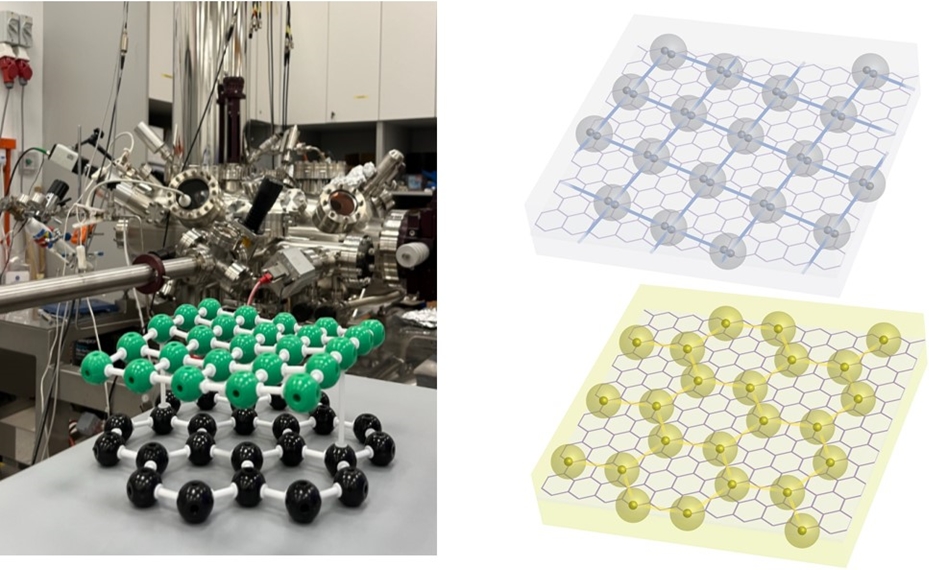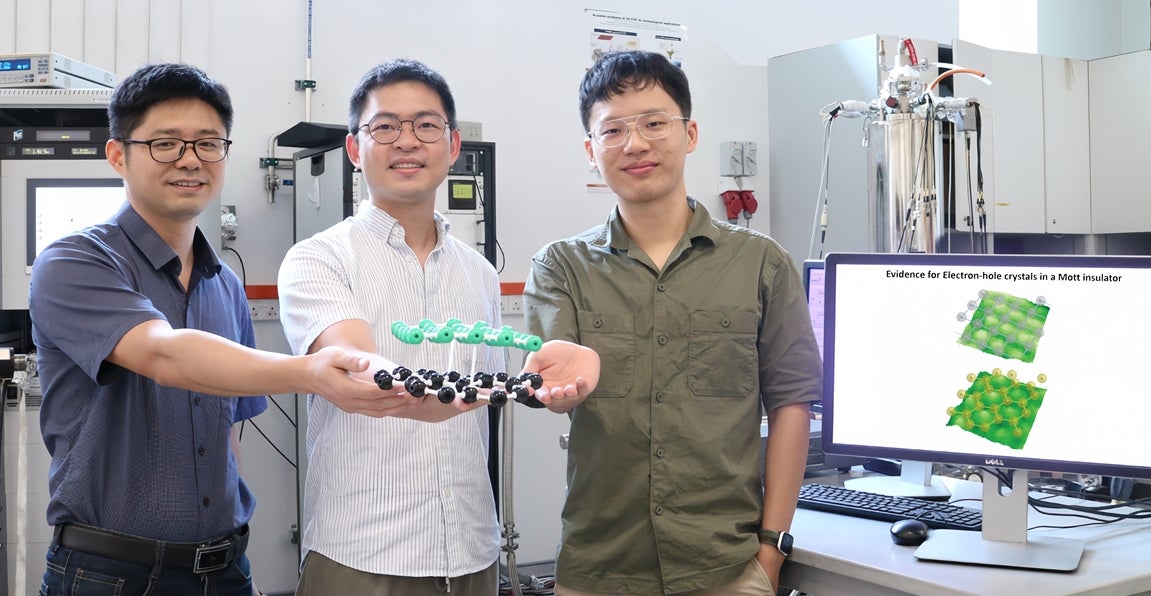
The team led by Associate Professor LU Jiong from the NUS Department of Chemistry and Institute for Functional Intelligent Materials (I-FIM), together with Professor Kostya S. NOVOSELOV, Director of NUS I-FIM has achieved a breakthrough by creating and directly visualising electron-hole crystals in an exotic quantum material, known as a Mott insulator, made from Alpha-ruthenium(III) chloride (α-RuCl3). This discovery opens new possibilities for exploring quantum excitonic states enabled by coexisting electrons and holes, which could pave the way for new advancements in computing technologies including in-memory computing and quantum computing.
The research was published in the scientific journal Nature Materials.

From left to right: NUS researchers Assoc Prof LU Jiong, Dr QIU Zhizhan, and Mr HAN Yixuan were part of the multidisciplinary research team that visualised elusive electron-hole crystals with their novel method that uses an exotic quantum material.
“Moving forward, we want to explore how we can control these crystals using electrical signals in new ways. Finding electron-hole crystals in doped Mott insulators could lead to new ways to make materials that can switch between different states quickly, which has potential in facilitating the development of powerful computers. It also opens up the possibility of creating new materials that could have applications such as simulating quantum physics,” added Prof Lu. Read the full article here.
